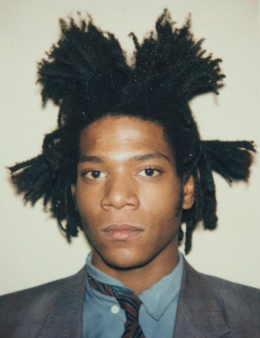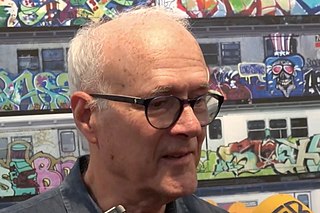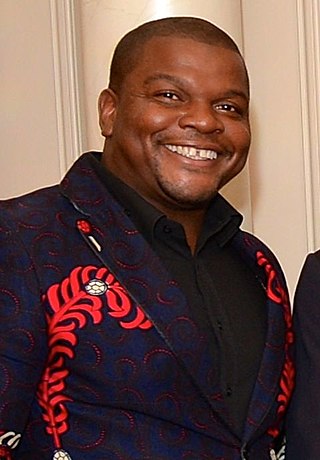Career
Luis Gispert creates art through a wide range of media, including photographs, film, sounds, and sculptures, focusing upon hip-hop, youth culture, and Cuban-American history. Some of his sculptures incorporate objects identified with hip hop, such as turntables, chrome tire rims, and boom boxes, into functional designs usable in other manners, such as furniture. He first rose to fame due to his well received Chearleaders set of art photographs which he started in 2000 - several of the pics feature chonga style women, and helped to establish chongas as a Miami icon, comparable to "ghetto fabulous" images. [1] [2] His installation art graced the 2002 Whitney Biennial at the Whitney Museum of American Art, and has been exhibited internationally at galleries and museums such the Brooklyn Museum of Art, and the Studio Museum in Harlem in New York, Art Pace in Texas, the Museum of Contemporary Art, North Miami, the Contemporary Arts Museum Houston, Palazzo Brocherasio in Turin, and the Royal Academy in London. Gispert has also participated in several exhibitions with high-profile commercial galleries including Gagosian Gallery, Andrea Rosen Gallery, and Deitch Projects in New York. He is represented by Mary Boone Gallery in New York, Rhona Hoffman Gallery in Chicago, and Moran Bondaroff in Los Angeles.
Gispert describes the first ten years of his career as a period during which he underwent a personal transformation in his attempt to comprehend why certain objects and events strike him physically and emotionally. Always, there is the push- and-pull between seduction and aggression in his work that inundates the viewer's senses. His photographs, videos, films and sculptures are complex, composed arrangements that delve into the familiar and the unknown, the mainstream and the marginalized, to expose and address the various subcultures that infiltrate the mainstream. These subjects also provided him the means to explore the sheer aggressiveness and excessiveness of the hip hop ornamentation or the effusively decorated interior of his immigrant family's homes. Similarly the volume of the rap lyrics lip-synched by a cheerleader in Can It Be That It Was All So Simple Then, 2001, or the unnerving scream of a car alarm mouthed by another cheerleader in Block Watching, 2002, is overwhelming. In 2011, the Feminist art collective Go! Push Pops [3] performed Block Watching Remix [4] at the Moore St. Market in a show curated by Michelle Lopez during Bushwick Open Studios remixing footage of Luis Gispert's original 2002 Block Watching video. In 2013, Luis Gispert invited Go! Push Pops to perform Block Watching Remix during the Brooklyn Museum's Annual Artist Ball. [5] [6]
His most recent photographs of landscapes viewed through the windows of customized vehicles achieve the widescreen grandeur of CinemaScope film and provide the viewer the sensation of occupying the driver's seat. He shot hundreds of sheets of film for each landscape in an attempt to capture the perfect vista, but ultimately collaged various details to produce landscapes that most closely adhered to his ideal.
Gispert's cheerleader series of lush, color photographs depicting cheerleaders accessorized with the hip hop gold chains and jewelry, first brought him to the art world's attention. Although this series was perceived as a reference to popular culture and cultural identity, Gispert approached the subject from the perspective of Baroque religious paintings depicting levitating saints at moments of epiphany and the conventions of sports photography, which established the iconic image of the sports hero in mid air. The cheerleader photographs were achieved with cinematic techniques and methods to produce special effects, most notably the green-screen. Gispert used a long exposure to photograph his models suspended on wires in a chroma-key green room. In movies, actors play against the green background, which is typically superimposed onto another backdrop to complete the illusion. However, Gispert retained the green field to reveal the artifice.
Filmmaking
Filmmaking has played a major role in Gispert's career. He has consistently contrasted films that use the syntax of cinema as exercises in the manipulation of sound, image and film time, as in Stereomongrel, 2005, and Smother, 2008, with raw, aggressive videos that deliberately contradict film conventions. Gispert has used elements of destruction to designate the end of one phase of his career and the beginning of another. He always approaches new projects by trying to work himself out of a problem. This occasionally requires the obliteration of the past and has manifested itself in a sculpture composed of all the props and hip hop ornamentation that he used in his Cheerleader series or the fictitious baptism of a pet dog (representing himself as a child) by fire in order to liberate his creativity in his film “Smother”.
Other works include films such as Stereomongrel. [7]
In 2024, Gispert released Cajita (Little Box), which won Best Film at the New York Latino Film Festival. Cajita's Miami premiere took place at the Pérez Art Museum Miami, Florida, where the artist is featured in the collection. Cajita narrates the story of an immigrant who flees their country inside of a crate. [8]

Jean-Michel Basquiat was an American artist who rose to success during the 1980s as part of the Neo-expressionism movement.

Ana Mendieta was a Cuban-American performance artist, sculptor, painter, and video artist who is best known for her "earth-body" artwork. She is considered one of the most influential Cuban-American artists of the post–World War II era. Born in Havana, Cuba, Mendieta left for the United States in 1961.

Henry Chalfant is an American photographer and videographer most notable for his work on graffiti, breakdance, and hip hop culture.
Brian Alfred is an artist based in Brooklyn, New York.

Kehinde Wiley is an American portrait painter based in New York City. He is known for his naturalistic paintings of black people that reference the work of Old Master paintings. In 2017, Wiley was commissioned to paint former President Barack Obama's portrait for the Smithsonian National Portrait Gallery. The Columbus Museum of Art hosted an exhibition of his work in 2007 and describes his paintings as "heroic portraits which address the image and status of young African-American men in contemporary culture."
Wangechi Mutu is a Kenyan American visual artist, known primarily for her painting, sculpture, film, and performance work. Born in Kenya, Mutu now splits her time between her studio there in Nairobi and her studio in Brooklyn, New York, where she has lived and worked for over 20 years. Mutu's work has directed the female body as subject through collage painting, immersive installation, and live and video performance while exploring questions of self-image, gender constructs, cultural trauma, and environmental destruction and notions of beauty and power.
Hernan Bas is an artist based in Miami, Florida. He graduated in 1996 from the New World School of the Arts in Miami.
Ernie Paniccioli is an American photographer of hip hop culture who lives in Jersey City, New Jersey. He was inducted into the Hip Hop Hall of Fame in 2014.
Emilio Sanchez (1921–1999) was an American artist known for his architectural paintings and graphic lithographs. His work is found in the permanent collections of the Metropolitan Museum of Art, Museum of Modern Art, National Gallery of Art, Smithsonian American Art Museum, Museo Nacional de Bellas Artes de La Habana, Museo de Arte de Ponce, Bogotá Museum of Modern Art, La Tertulia Museum, and the National Gallery of Australia.

Janette Beckman is a British documentary photographer who has worked in London, New York and Los Angeles. Beckman describes herself as a documentary photographer. While she produces a lot of work on location, she is also a studio portrait photographer. Her work has appeared on records for the major labels, and in magazines including Esquire,Rolling Stone,Glamour,Italian Vogue,The Times,Newsweek,Jalouse,Mojo and others.

Alfredo Jaar is a Chilean-born artist, architect, photographer and filmmaker who lives in New York City. He is mostly known as an installation artist, often incorporating photography and covering socio-political issues and war—the best known perhaps being the 6-year-long The Rwanda Project about the 1994 Rwandan genocide. He has also made numerous public intervention works, like The Skoghall Konsthall one-day paper museum in Sweden, an early electronic billboard intervention A Logo For America, and The Cloud, a performance project on both sides of the Mexico-USA border. He has been featured on Art:21. He won the Hasselblad Award for 2020.
Gary Simmons is an American artist from New York City. Using icons and stereotypes of American popular culture, he creates works that address personal and collective experiences of race and class. He is best known for his "erasure drawings," in which he draws in white chalk on slate-painted panels or walls, then smudges them with his hands – a technique that renders their imagery ghostly.

José Parlá, is a Brooklyn-based contemporary artist whose work has been described as "lying between the boundary of abstraction and calligraphy."

Chonga is a Spanish-derived term used especially in South Florida, often to indicate a working-class, sexually liberated, very sassy, and emotionally expressive young woman.
Go! Push Pops, formally named The Push Pop Collective is a queer, transnational, radical feminist art collective under the direction of Elisa Garcia de la Huerta and Katie Cercone.

Cey Adams is an American visual artist, graphic designer and author. He was the founding creative director of Def Jam Recordings and is known for his work with Beastie Boys, Public Enemy, LL Cool J, Jay-Z, and Mary J. Blige. He has been described as "legendary" for his work in hip-hop graphic design.
Franklin Sirmans is an American art critic, editor, writer, curator and has been the director of the Pérez Art Museum Miami (PAMM) since October 2015. His initiatives there include ensuring that PAMM's art program reflects the community in Miami and securing donations. In his first six months at PAMM, he managed to secure the largest donation of works in the museum's short history, over a hundred pieces of art were donated by Design District developer Craig Robins.
Elle Pérez is an American photographer whose work explores gender identity, intimacy, vulnerability, and the relationship between seeing and love. Pérez is a gender non-conforming trans artist. They are currently an Assistant Professor of Art, Film, and Visual Studies at Harvard University. Pérez is represented by 47 Canal and currently lives and works in New York City.

Barron Claiborne is an American photographer and cinematographer who grew up in Boston, Massachusetts. He began taking photographs at the age of ten. After moving to New York in 1989 he began assisting established photographers such as; Richard Avedon, Irving Penn, Saint Claire Born, and Richard Numeroff. His photographic mentor, was Gordon Parks.

Ithaka Darin Pappas, known professionally as Ithaka, is an American-born multidisciplinary artist of Greek ancestry who creates using music, writing, sculpture and photography. He has authored a collection of short stories, entitled Ravenshark Chronicles published in international magazines and periodicals, which have sometimes been the basis for his travel-oriented lyrical content. In a 2005 article for the magazine Waves, journalist Ricardo Macario described Ithaka as "The Miscellaneous Man". In a 2008 review of Ithaka's sixth album Saltwater Nomad, the online surf-culture platform Surfline stated that "the artist effortlessly traverses at ease between all of his choses mediums of expression [music, sculpture, writing and photography]", and that "his life's journey is a soulful balancing act somewhere between the worlds of euphoric creation and aquatic diversion."










